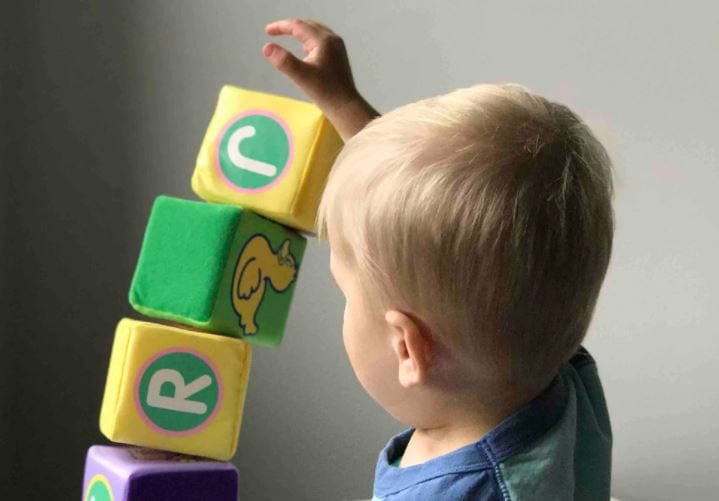Play to learn – healthy development for children in the early years
- Published on:
- Author: Christina Hoey

Early childhood is the most critical period in a child’s life – as the brain develops, pathways are built and critical connections are made that are essential to future learning, growth and success. In this critical window, infants and toddlers learn about the world around them and develop the foundations of life-long verbal and nonverbal communications skills. Because of its significance, every new parent wants to create the best environment for their child to grow and thrive. One of the simplest methods to stimulate brain development in young children is “play to learn”. Read on to learn why play to learn is important and how you can play to learn with your child.
What is play to learn?
Play to learn is as simple as it sounds – using play to help children from as young as one month old to learn about the world around them. Young children need to be stimulated to exercise and grow their young brains. Play to learn enables this by developing imagination, problem-solving, communication, and mobility skills.
For young children who haven’t developed mobility yet, games like peek-a-boo or playing with a rattle can teach them about communication, foster healthy brain development and social skills. For toddlers as young as twelve months old, who have developed motor skills, playing with objects and identifying shapes and animals can encourage them to learn about the world outside of their homes and encourage healthy interactions with others.
Playing is a fun way to encourage children to explore the world and shapes their attitudes towards formal education later on. Instead of giving up when they face challenge, play helps develop resilience, persistence and creativity. When children have fun learning at home, they will feel less discouraged when facing problems at school and receive better results in the long term.
How does play to learn help a child develop?
During the first two years of a child’s life, their brain goes through an important period of development, which not only shapes their understanding of the world, but also their abilities to communicate and problem-solve effectively in the long run.
In regions with greater poverty rates, parents of young children often need to work to provide for their families and leave childcare duties to elderly grandparents, who may not have the physical health required to engage in stimulating playtime with their young grandchildren. That’s why Save the Children is dedicating resources to help poor children gain access to quality education and mitigate the effects of poverty on their learning outcomes.
How can you help children play to learn?
By the time a child reaches kindergarten, their brain development is already over 80 per cent completed. Therefore, during the first three years, families need to plan for daily playtime with their young children to ensure that they receive the proper stimulus to learn and thrive as their brain develops.
Engaging in conversation with your child as if you are talking to an adult can help the child pick up communication skills and nonverbal cues, which also fosters brain development. When your child develops communication skills, reading to your child and allowing them to interact with the book can be a bonding bedtime activity that will yield benefits for life.
Other supporting figures in a young child’s life, including childcare workers, healthcare workers, and other parental figures, understand the importance of play and include play routines in their interactions with young children. For example, some paediatricians provide toys at their office and incorporate play routines in their interactions with young children. If your child regularly spends time with a childcare worker or grandparents, make sure that they understand the importance of play to learn and encourage them to add productive playtime to their time with the child as well.
In regions with greater poverty rates, parents of young children often need to work to provide for their families and leave childcare duties to elderly grandparents, who may not have the physical health required to engage in stimulating playtime with their young grandchildren. That’s why Save the Children is dedicating resources to help poor children gain access to quality education and mitigate the effects of poverty on their learning outcomes.
If you’d like to help less privileged children to have better access to educational toys, resources, and stimulating activities that can help them thrive in the future, contribute with a donation to Save the Children’s educational program and make a difference for the little ones.

